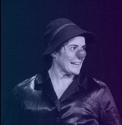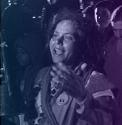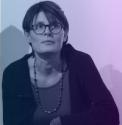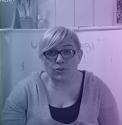Magdalena Sin Fronteras IV Santa Clara, Cuba January 8 - 18, 2014
Magdalena Sin Fronteras: A Women’s Theater Festival in Santa Clara, Cuba
January 8 – 18, 2014
Santa Clara is a small city with old hilly, cobblestone streets and sidewalks. Horses pull carts with seats. Anyone can hop on and pay the driver. We walked everywhere, from hotel to restaurant and from theater to theater. There are five theaters and the dance center. Nearby is a beautiful little building with a courtyard, the artists’ union. The union, dance center and theaters were used everyday, with events from 8:30 AM until at least 11 PM. All roads lead to a wonderful park in the middle of town. The citizens say, “Havana has the CARIBBEAN, but we have THE PARK!” Children play freely in little groups. Parents aren’t afraid. Children aren’t stolen. No one is killed.
In Santa Clara, you walk down a street, and notice that the doors to people’s homes are open except when it’s bedtime. People walk in and out to visit each other. I saw lots of rocking chairs, and every house appeared to have a television set although the living spaces are tiny. Chickens roamed freely. Even in Havana, I saw a rooster crossing a road unafraid of traffic. Besides the many chickens that go where they wish, we saw unleashed dogs that were trotting around the streets and taking naps. A veterinarian I met in Santa Clara told me that the dogs live on the streets and scrounge for food. The chickens and roosters are wild, and they too roam the streets scavenging food. Caged birds are popular in Cuban restaurants. A caged parrot lives at the restaurant where we ate in Santa Clara. The bird occasionally greeted us with “Hola!” We saw more caged birds at an outdoor restaurant in Havana. In Santa Clara, electricity can suddenly go out and water can stop flowing from a tap. Sometimes toilets won’t flush. But electricity and water do return. People don’t waste water. A Cuban shower: Heat water in a plastic bucket, add cold water, wet yourself, soap yourself and rinse off. Since it’s not advisable for foreigners to drink local water, we drank plastic bottles of water. I’ve never drunk so much bottled water in my life.
I was invited to perform and teach at the 4th Magdalena Festival Sin Fronteras (Without Borders). I traveled with my great lighting designer and stage manager, Sarah Harris, who helped me in immeasurable ways. The Festival opened us up to the world of the Magdalena Project, which is committed to nurturing an awareness of women's contribution to the theatre and performance, and to supporting exploration and research by offering concrete opportunities to as many women as possible, both in the profession and in study. It is a truly horizontal network with members on five continents. Jill Greenhalgh founded the Magdalena Project in 1986 in Cardiff to bring greater focus to the under represented area of original work by independent women theatre makers from many different cultural and political contexts. Since then the Magdalena women have created dozens of festivals in their home countries.
My performance of “What Do I Know About War?” received a tremendous response from this group of extraordinary women as well as Cubans from the Santa Clara community, including a large number of students. In addition to myself, Magdalena Festival Sin Fronteras included performers from Cuba, Colombia, Chile, Brazil, Ecuador, Mexico, Wales, Italy, Japan, Sweden, Denmark, and Norway. The next festival will be held in Ecuador. The Magdalena women are deeply connected and they welcomed us into their network.
The Festival included a full week and a half schedule of performances, discussions, presentations, workshops, and excursions. Highlights included several performances by Estudio Teatral de Santa Clara, directed by the Festival coordinator, Roxana Pineda; “Tierra de Fuego,” a visually stunning piece about women, travel, and home in Chile; “My Life as a Man, “ performed by Norway’s brilliant comic actress, Geddy Aniksdal; a show based on the poetry of Patricia Ariza, the incomparable Colombian feminist, playwright and co-founder of Bogata’s Teatro La Candelaria; a show celebrating the life of actress María Cánepa, performed by Odin Theater’s Julia Varley and directed by Eugenio Barba; a shocking new work about rape from a talented young group from Sweden; a demonstration of traditional Japanese Dance by Keiin Yoshimura; the premiere of “Soma Mnemosine” by Teatro La Candelaria, as well as presentations and discussions with all these extraordinary women about dramaturgy and representation. Next door to Estudio Teatral is a beautiful home for elderly women. Under Roxana’s direction, the women performed a memorable vocal concert in the courtyard of their home. Although Magdalena Festivals are for women, some men were included. There were a few wonderful male actors, musicians, students and audience members.
Jill, Julia, Geddy and Patricia have participated at all the festivals. I’ve known Patricia since 2012 when she invited me to perform at her Women on Stage for Peace Festival in Bogata. At Magdalena Sin Fronteras I became friends with Geddy and Jill. We’re the same generation. In fact, Patricia and Teatro La Candelaria met Bread & Puppet at the Nancy France International Theater Festival in 1968. Jill knows many of the women who were members of the Judson Dance Theater. I saw those women perform, and of course Bread & Puppet performed at Judson Church too.
At Magdalena Sin Fronteras, we met Perla de la Rosa and Guadalupe de la Mora, who are prominent members of Teatro Telon de Arena in Juarez, Mexico. Perla is considered one of the most outspoken and important artists along the border. She is also a theater professor at the University in Juarez. Perla and Guadalupe have invited me to perform at the University, and hopefully also at the U of Texas in El Paso. The two universities are on both sides of the border and they have connections. Fort Bliss is near, and many young Mexicans join the US Military with the hope of getting citizenship. My show “What Do I Know About War?” is based on first hand accounts of American troops who have served in Iraq and on interviews with their families. The show will make a great impact on young Mexicans and Americans.
For me, one of the most memorable experiences at the Festival was teaching my workshop, “The Other Side of the Mask.” I use some of Peter Schumann’s old paper-mache facemasks. The Cuban students in my workshop were incredibly open and eager to learn. I was told that this is a common characteristic among students throughout Latin America. These young people are already honest artists. They didn’t “mask” their identities, nor were they tempted to play stereotypical characters. They quietly put on the masks and slowed down. In the silence behind the masks the students discovered new characters, with new bodies, ways of moving, feelings and ways of interacting with others. When I asked why they understood and embraced the work so easily, one of the young women replied, “We’ve experienced a lot of pain in our lives.” They also told me that they had never had a good teacher before. I think that could be because I’m gentle, I don’t tell them what to do, I don’t impose a technique upon them. I explain that it’s not about acting, performing, persuading the audience anything. Behind a mask one is protected from the judging eyes of an audience. It’s a personal discovery. We the so-called audience are drawn into the improvisation, the mystery and we begin to breathe with the masked characters.
I suggested that the students relate to the environment. Sarah immediately understood and encouraged the students. We also suggested that, if they wished, they could use some simple pieces of clothing, and some simple objects. Roxana Pineda had chosen an old Afro-Cuban tale to be addressed in the 6 different workshops taught by 12 actresses at the Festival:
Obba, the most beautiful princess in Africa, meets Shangó, and both were captivated instantly. Shangó asked Obba to marry him, but she told him that he should go to her home to make a formal petition before the young goddess's parents. Shangó requests the dowry and Obba´s parents accepted: a lot of corn flour and a ram to prepare his favorite food: Amala. Shangó possesses all virtues and defects, he is known by being a glutton and a womanizer, a troublemaker and demanding with women. Even so they married, they celebrated a beautiful wedding and a honeymoon of a few hours. Shangó leaves before dawn to combat with its eternal enemy Oggun, and returns late asking for his favorite food, the Amala. Obba like a good wife serves him day after day his favorite food until there is no more food. To please her husband and to have more food she cut her ears and cooked it together with the flour, and covered her head with a scarf so that Shangó couldn't notice the lack of ears. After dinner Shangó requested the wife's love favors, but when he discovered that she has lost her beauty by cutting her ears he gives a screamed with horror and left running, Obba has never seen him again. People say that Obba cried so much that she turned into the river that took her name.
Sarah and I suggested to the students that if they could relate to anything in the tale, such as a feeling, an image, or a character, to let it stimulate an improvisation. We didn’t expect them to enact the tale. The students prepared beautifully together. We stayed out of their way. At the final session, the masked students created a riveting, mysterious scene, which they played out of doors using a road, the grass, a tree, a platform, the steps and the door to a large building, which is the Center for the Development of Modern Dance and Theater.
Huge fig trees are in front of the dance center. Fig trees have aerial roots, which grow down from the branches and then horizontally around other roots becoming thick and twisted like snakes. The trees are magnificent. The aerial roots seem to grow out of a scary fairy tale. My students improvised their scene around one of those trees. At the end, the masked characters escorted the audience inside.
Cuba is a very poor country. Food is rationed. The citizens receive coupons, which entitle them to a certain amount of rice, beans, eggs, bread, etc per month. Only on specific days and times are coupons accepted. I often saw people waiting online for their rations. Cubans find mysterious ways to earn more money to buy food. In Santa Clara, some people have small vegetable gardens in front of their little houses. There’s a fruit and vegetable market behind the dance center. Food is mostly local, and it’s mostly organic, because the USA doesn’t sell pesticides to Cuba. This has ushered in one of the most sustainable food systems in the world. A New Yorker, who used to work at Theater for the New City, now makes trips to Cuba with the Sustained Farming Team. He told me that Cuban farmers remember and practice the old, traditional ways of farming. These farmers know more than we do. I have read that Cuba now leads the world in urban agriculture.
An economy cut off from most of the world has made Cuba immune to homogenization and allowed it to maintain a rich cultural identity. Billboards and other large-scale advertising are completely absent in Cuba, other than the billboards containing slogans and imagery celebrating the Triumph of the Revolution. Today, as Raul Castro has begun to institute reforms and slacken government control of its citizens, Cuba is in a period of transition, straddling old and new ways. Now, Cubans have the option to earn state-sanctioned salaries or to pave their own way in this new entrepreneurial territory. However, the average Cuban still only earns the equivalent of $20 per month.
In Santa Clara we, and most of the other international theater people, lived in a little hotel beneath the Center for the Development of Dance and Theater. The spacious building was formerly a maternity hospital, and the outdoor paths, benches and trees offered peace and quiet to the expectant mothers. The hotel is an example of private enterprise, very simple, no frills, but with good espresso and a roll with butter for breakfast. Everyone from the Festival ate lunch and dinner together in a private restaurant near the theaters where we were served the food of the day. Every performing arts group or performing arts festival in Cuba must apply to the Provincial Council on Performing Arts to receive resources, which are very limited. But the Council provided our food, lodging and transportation from Havana to Santa Clara, back to Havana and to the airport. Everyone I met was kind and courteous, quieter than many Americans. The pace of life is slower.
I was trying to fall asleep my first night in Santa Clara when I heard a strange noise like someone warming up a kazoo. This was followed by a chug-chug-chug, a train outside my window. The next day we were told about the Battle of Santa Clara, which was won by Che Guevara with 13 young rebels and a bulldozer. In 1958, the city of Santa Clara was already united behind the Revolution and the townspeople brought food and other supplies to the rebels hiding in the hills. Towards the end of December, Che borrowed a bulldozer from an agricultural school. The railroad workers, who were also behind the Revolution alerted Che as to when an armored train, with Batista’s soldiers, weapons and ammunition, would come through Santa Clara. With perfect timing, Che rammed the bulldozer onto the tracks and derailed the train. Many of the soldiers joined the rebels. Batista lost half his army and he fled. The bulldozer, some twisted train tracks and one of the armored cars, are on permanent display outside the dance center. Nearby is a playground with swings for children and grownups.
In Santa Clara, a window is a frame of natural light and air. Closing the window means closing the shutters. In the mornings I sat on a windowsill of our hotel, hung my legs off the edge, and sipped espresso. One of the owners of the hotel jumped out the window whenever he wanted to go outside. It’s faster and more fun than using the door. Houses are small and doors are tall for ventilation. We saw beautiful wooden chairs. Many buildings have inner courtyards with tiles, plants, fresh air and light. This is an aspect of Spanish Colonial architecture.
Cuba is famous for dance. There was a demonstration of women’s Afro-Cuban dance at the Festival. The walls of the dance center are lined with photos of Cuban modern dancers. I was riveted. The director of the center told me that Cuban modern dance is dynamic and powerful, because it’s not influenced by the Russians, but by great American pioneers, including the Humphrey-Weidman Company with which my father danced.
Santa Clara is considered the most highly cultured city in Cuba, so I’ll tell you more. The Free University faces the Park. Near the University we saw bookstores, which carry literary, mathematical, scientific and revolutionary books and journals exclusively. My favorite bookstore, which also faces the Park, has a special section on the performing arts including the Ballet Nacional de Cuba, founded by the great Alicia Alonsa who is still alive at age 92. Cubans love art. Wherever we went, we saw paintings on the walls and in small alcoves with local crafts. We saw murals on the streets.
Just a few minutes on a Saturday night, the last night of the Festival, as we walked along Independence Boulevard, which is closed to traffic, we saw and heard something wonderful. In an open place, usually for sitting, there were families standing together, a group of musicians were playing drums and brass instruments, a man was singing and a little child was dancing. I wish we could have heard more Cuban music to tell you about.
Cubans love pizza and ice cream just as much as we do. In Santa Clara pizza slices are small, delicious and cost 25 cents. I saw kids snacking on pizza when they got out of school. Ice cream is sold at tiny shops and in the Park. Havana’s famous Coppelia Ice Cream Parlor is named after the 19th century comic ballet “Coppelia.”
Besides walking and traveling by horse-drawn cart, people ride bicycles and drive motorcycles and old American cars. Diesel fuel is used. It smells awful. Pedestrians do not have the right of way. Drivers rarely honk their horns. Sidewalks are very narrow and as in New York, other pedestrians sometimes ignored us, so often we were forced off the sidewalk onto the street only to be almost run over by a motorcycle, truck or car. We were told that Cuban drivers are the most polite in Latin America.
Santa Clara at night is mysterious and beautiful. No illuminated signs. The window shutters are tightly closed. I see only a few street lamps shining, but the color is yellow, not bright white. A lone figure walks down one of those hilly, cobblestone streets. He casts dramatic shadows. It’s like a grade-B movie. I walk back to our hotel and swing to and fro on a swing near Che’s bulldozer.
Many Americans know about the Cuban government’s horrific treatment of homosexuals for decades after the Revolution. Our friend Alejandro Marrero, a professor and co-director of the festival, told us that Cuba no longer has laws against gays. In Santa Clara we saw many gay men walking comfortably together. Raul Castro’s daughter, Mariela, is the director of the Cuban National Center for Sex Education in Havana and an activist for LGBT rights in Cuba.
Alejandro told us that all religions are now permitted in Cuba. He briefly told us about Santería: “To escape persecution, the African slaves who were brought to Cuba replaced the names of their gods with Christian saints. They practice animal sacrifice. Wearing white is necessary for the ceremony.” I imagined the red blood shooting out of chickens, goats, splashing and staining everything, people in white clothing, white curtains and fabric on the floor. But I know nothing about Santeria.
One day, I asked very quietly if it’s still true that Cubans aren’t permitted to say anything against the government or to perform a show against the government. Yes, I was told, very quietly.
The morning after my performance in Havana, I sat with Sarah and Alejandro on the verandah of the National Hotel, once the haunt of movie stars, gangsters and politicians. We looked at the Caribbean Sea. That afternoon we flew home from Jose Marti Airport, named after Cuba’s National Hero. He was a 19th century poet who dedicated his life to liberty and independence.
Margo Lee Sherman New York City February 20, 2014
Here are some photos taken by Sarah Harris:






